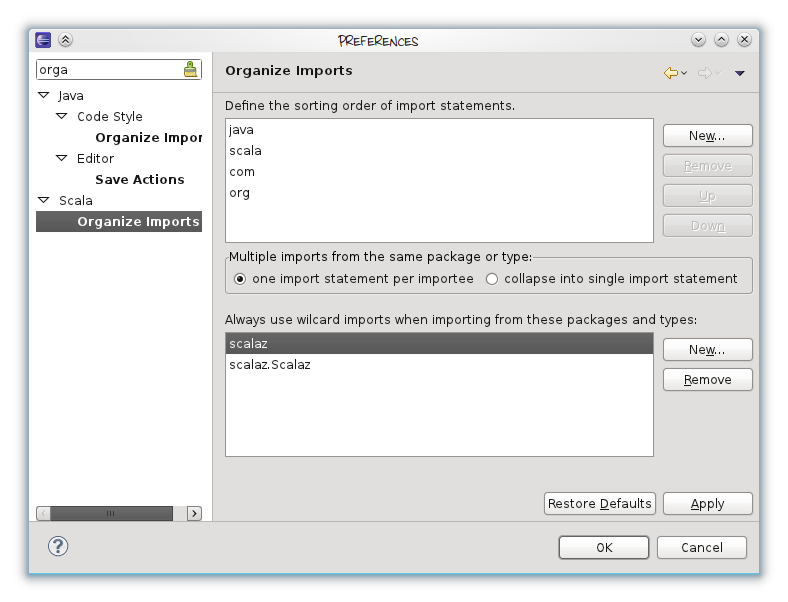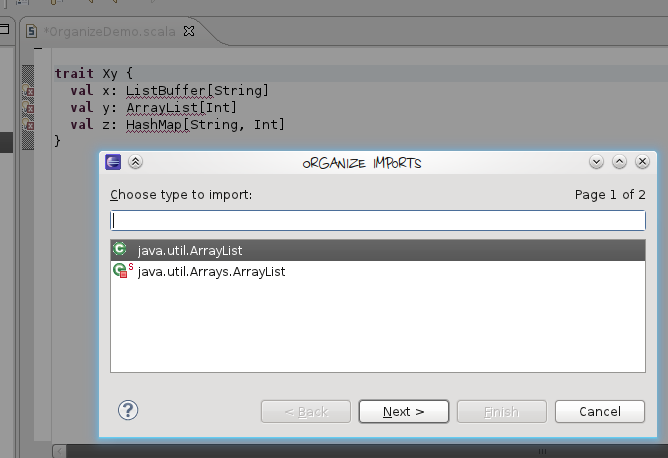Organizing Imports in Scala
Organize Imports was a very often requested feature for the Scala IDE for Eclipse, so I wrote the first very limited version as part of my thesis. It couldn’t do much more than sorting the imports and collapsing them from multiple import statements to a single one. At the beginning of this year, Daniel Ratiu provided a patch that made Organize Imports recognize some of the unused imports.
One limitation we still had was that we didn’t really know the complete set of required imports, but this is required to, for example, replace all wildcard imports with the actually used ones. Another request was that it should be possible to push import statements down to the scope where they are used. For this, we also need to know which parts of the code require which imports.
Yet another motivation to write some code to analyze dependencies was that I want to provide a move refactoring, and for this too we need to know some of the dependencies in the code. But that’s for a future post, back to what we have now:
As you can see, just like the JDT, we can now configure grouping for imports (groups are separated by a blank line), and it’s possible to expand or collapse imports from the same package. The Scalaz or Lift users will likely want to always use wildcard imports on some packages and types, so this is also possible. The JDT has some additional options, but I think I implemented the important ones.
And there’s more! No, not Reversi, but if there are missing imports in the file, Organize Imports will add them for you:
This all is part of the latest beta release of the Scala IDE, so please give it a try and open a ticket if you find a problem.


